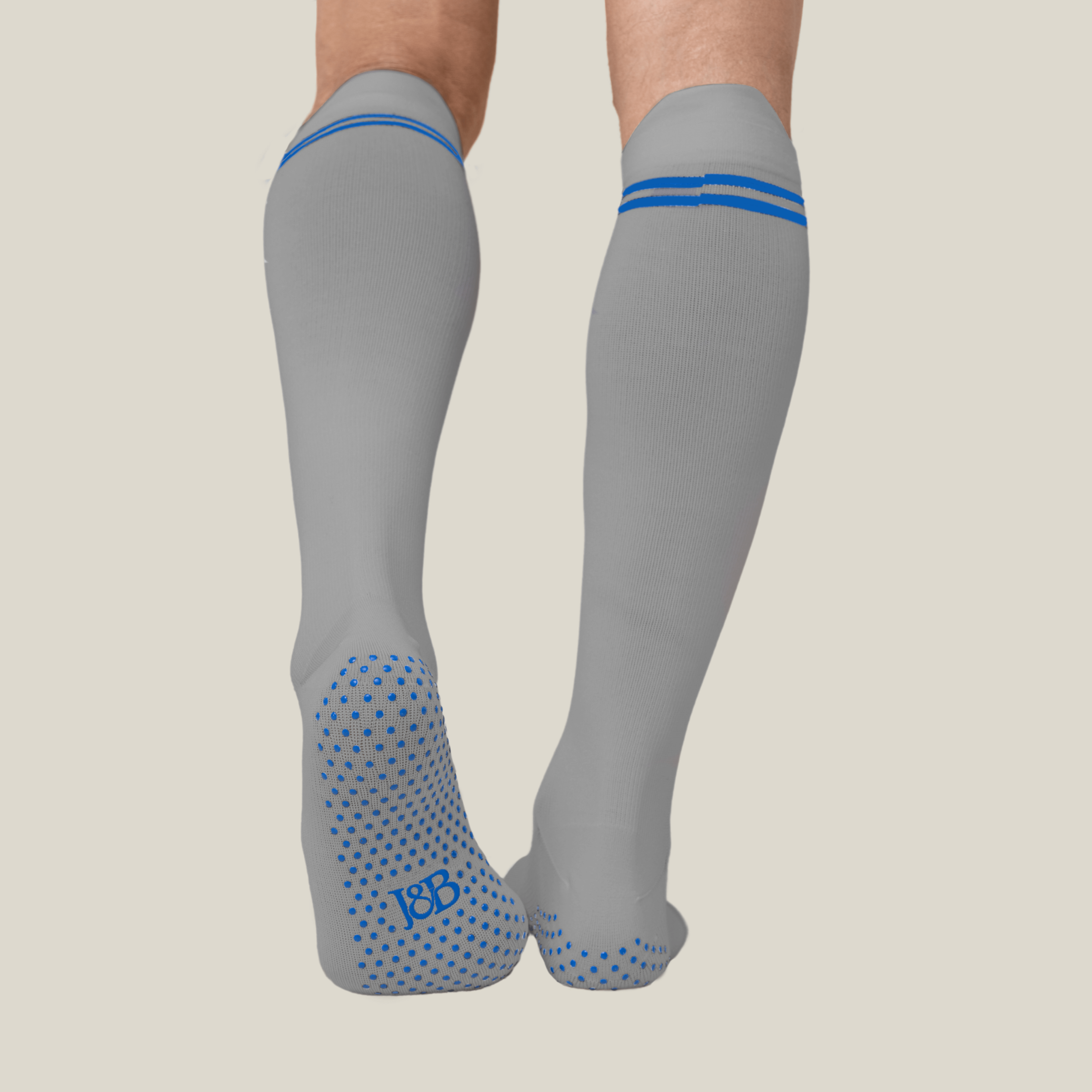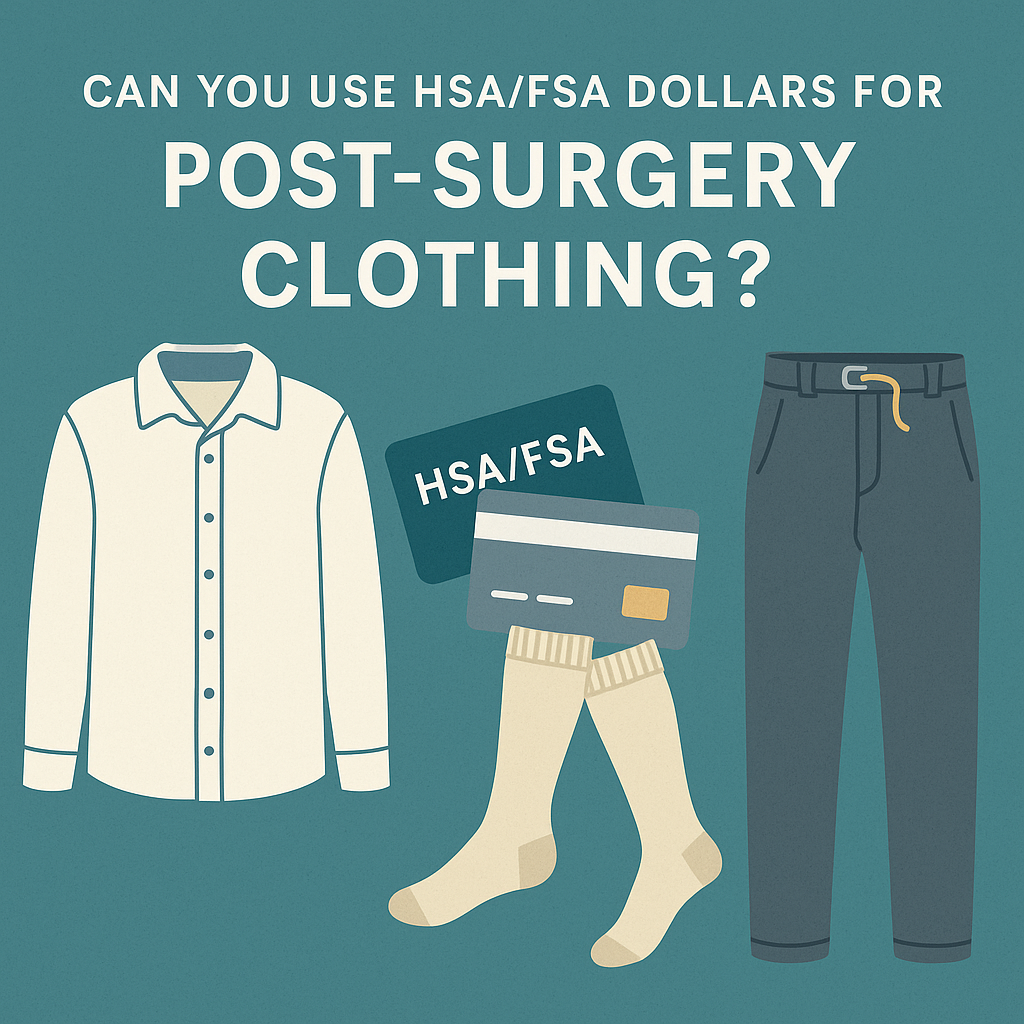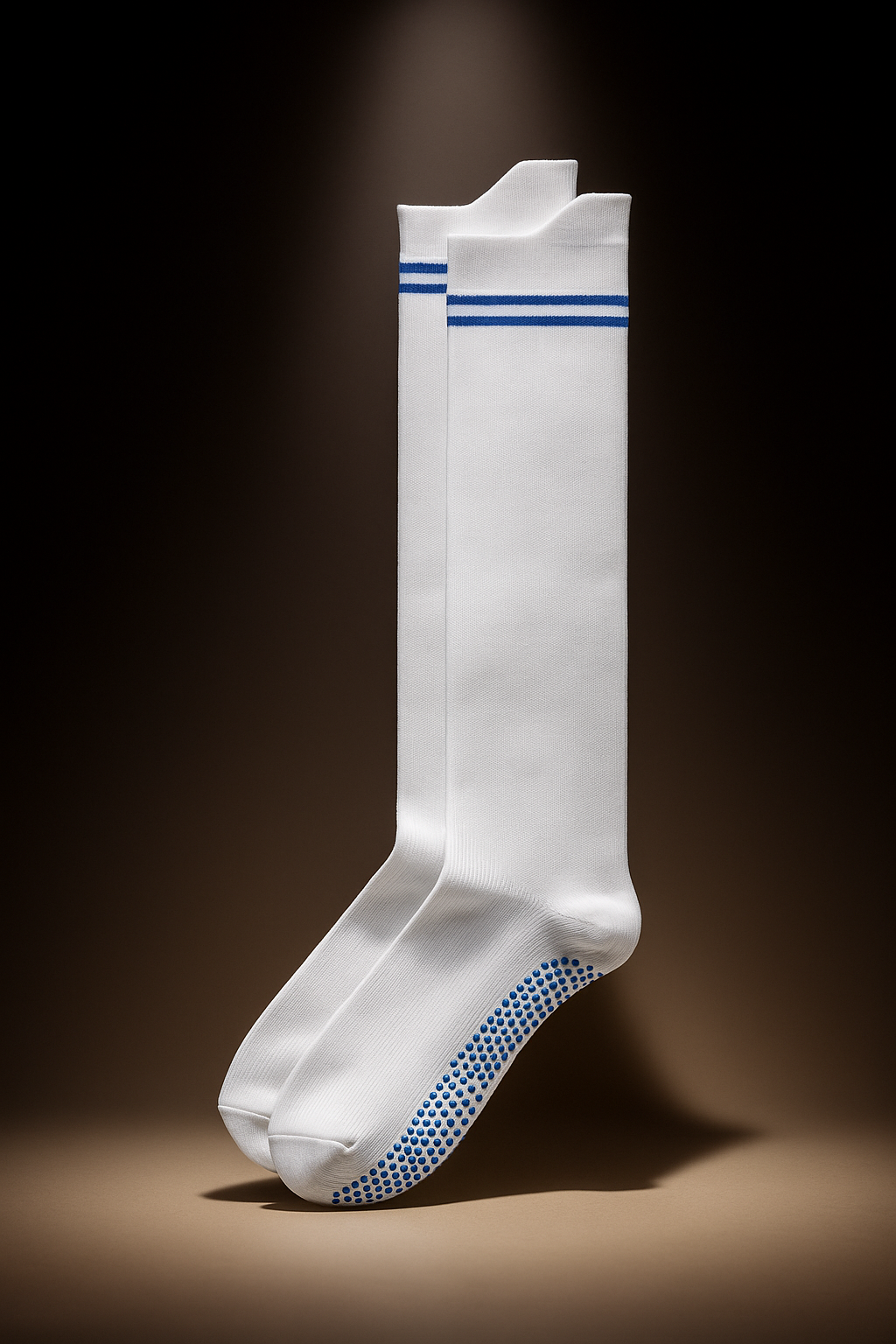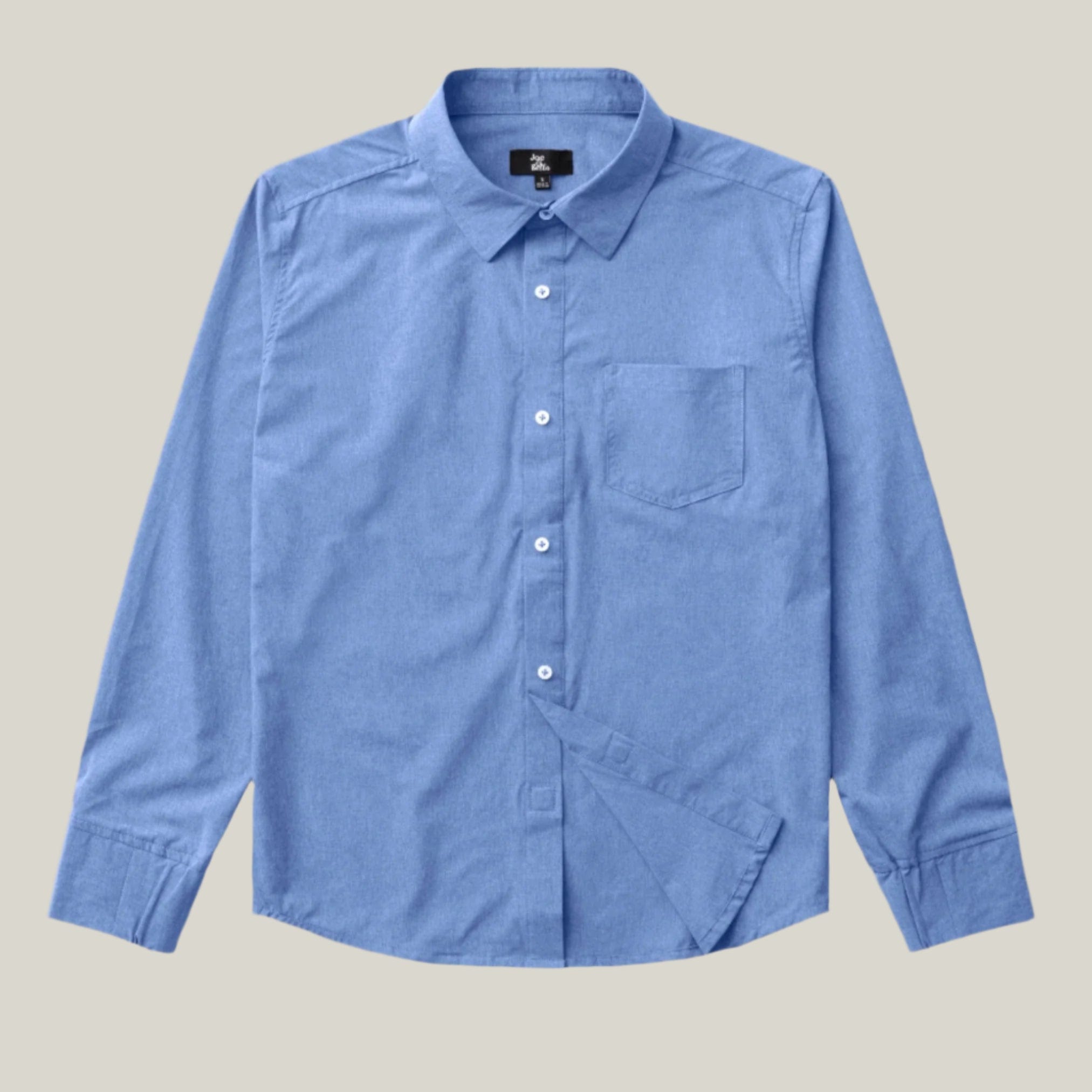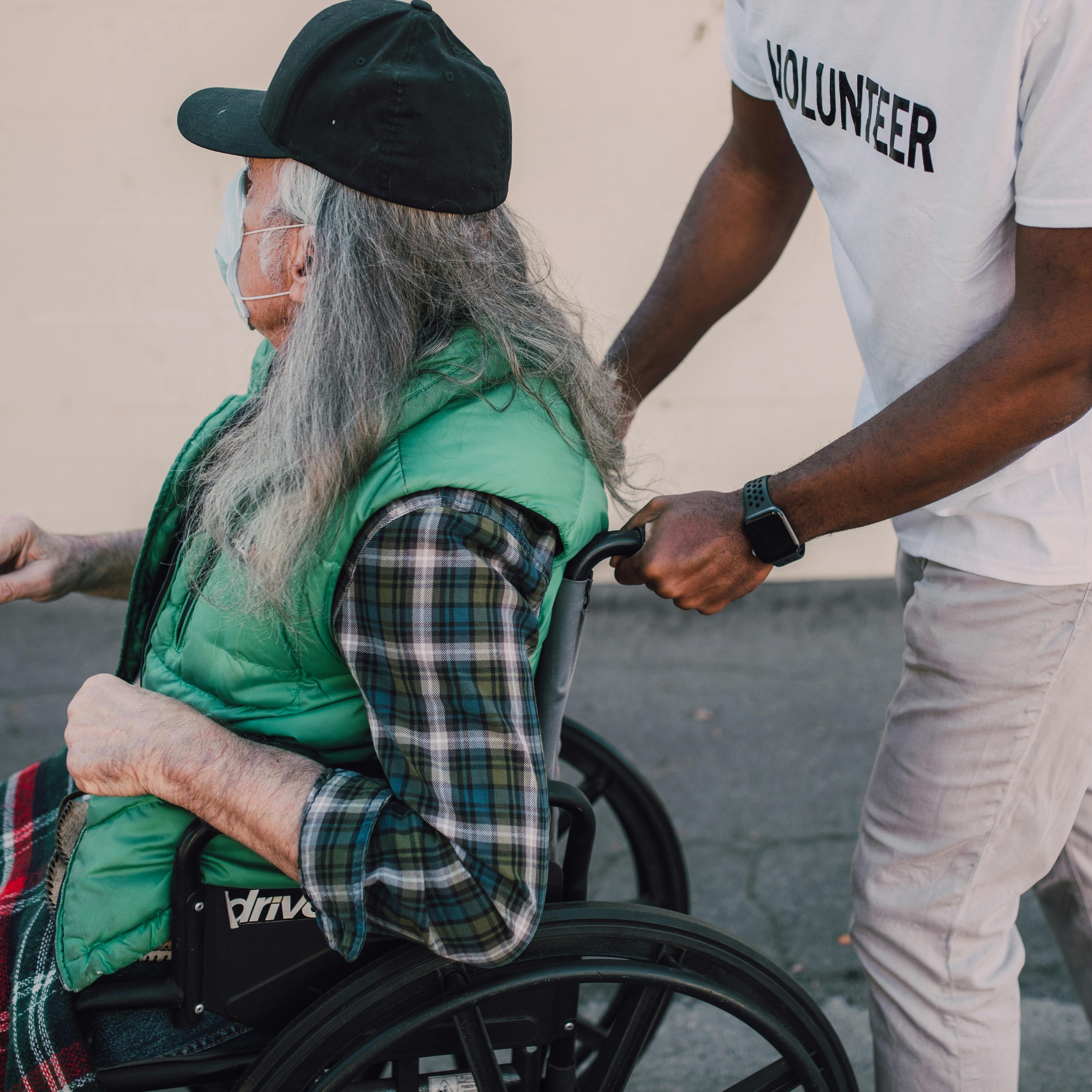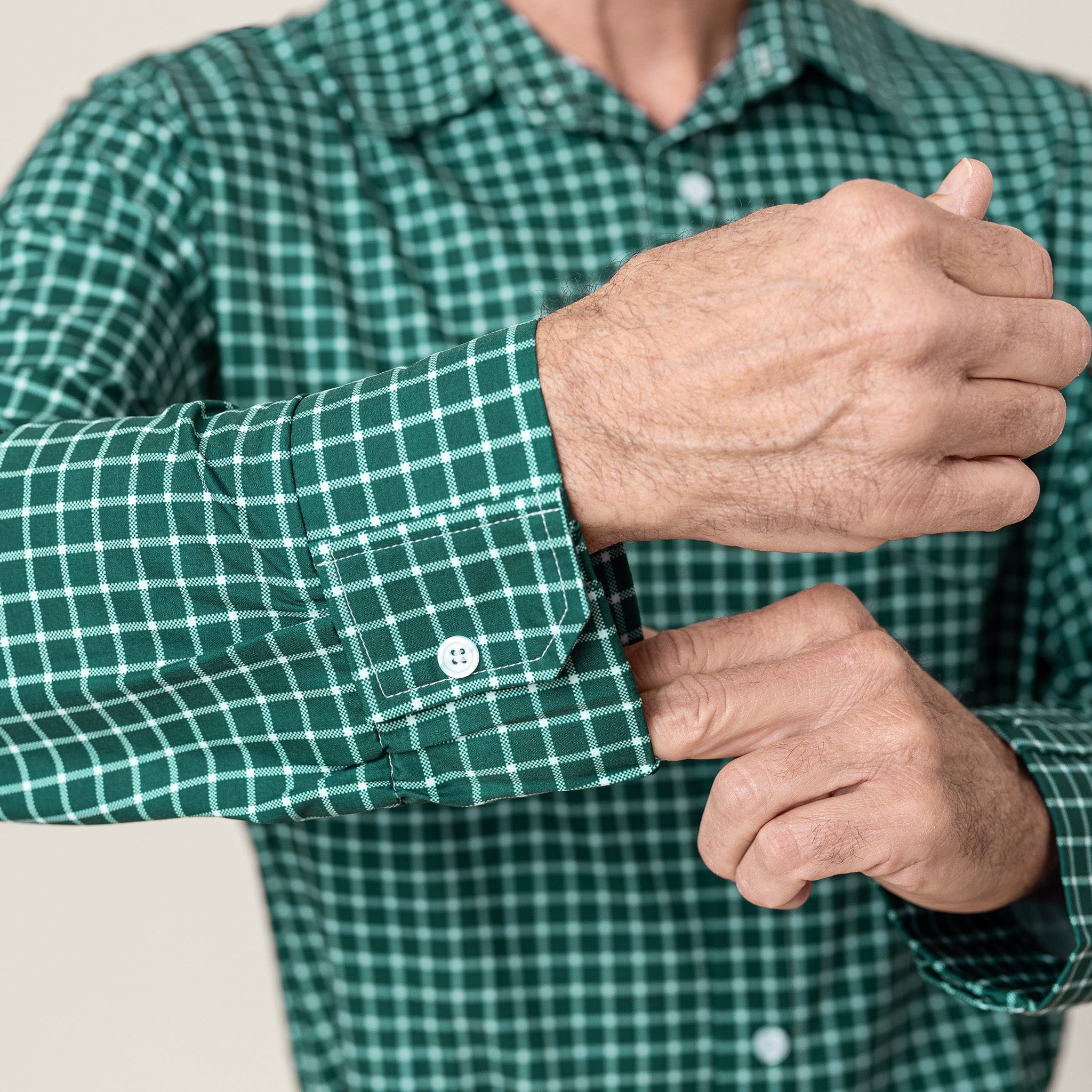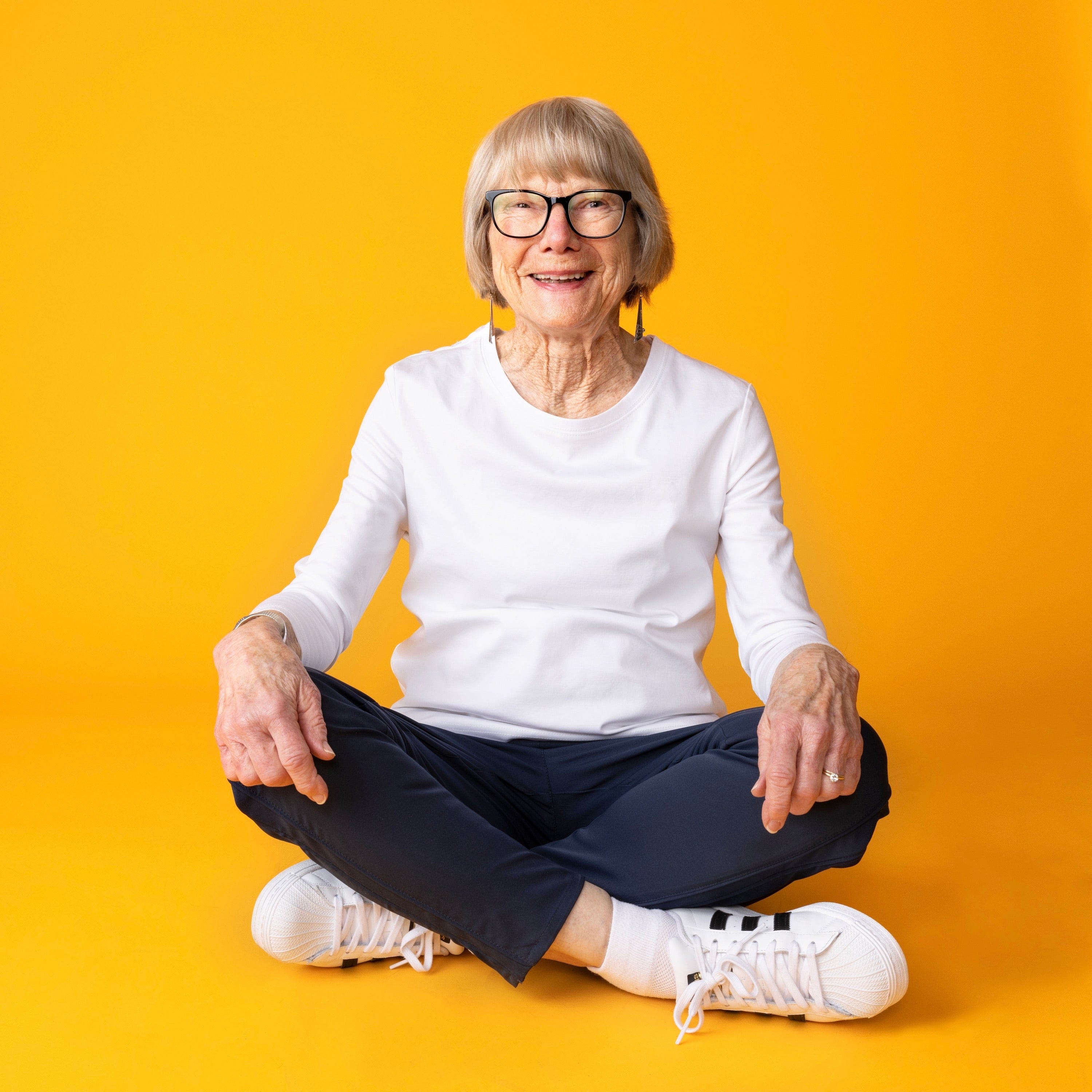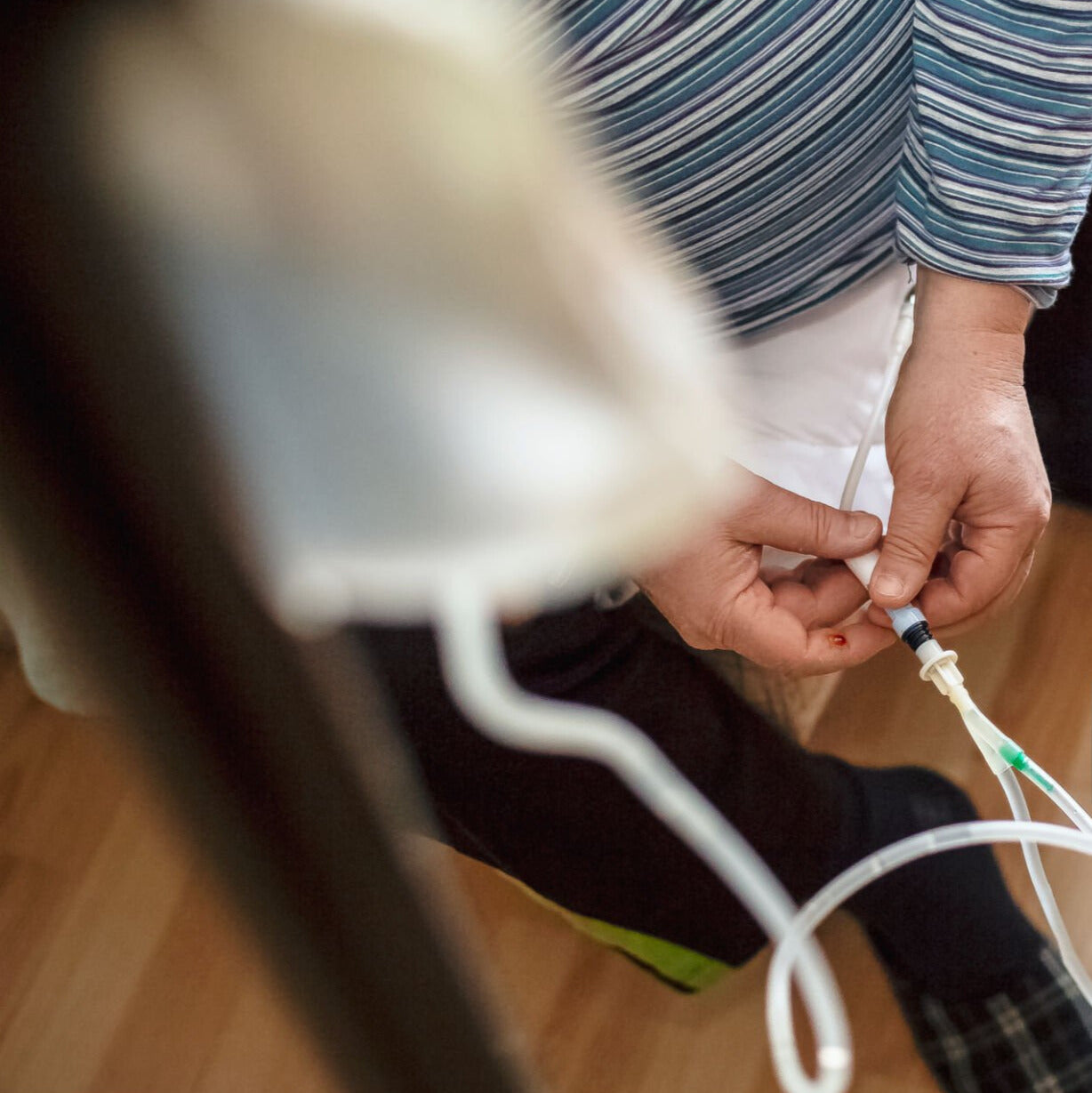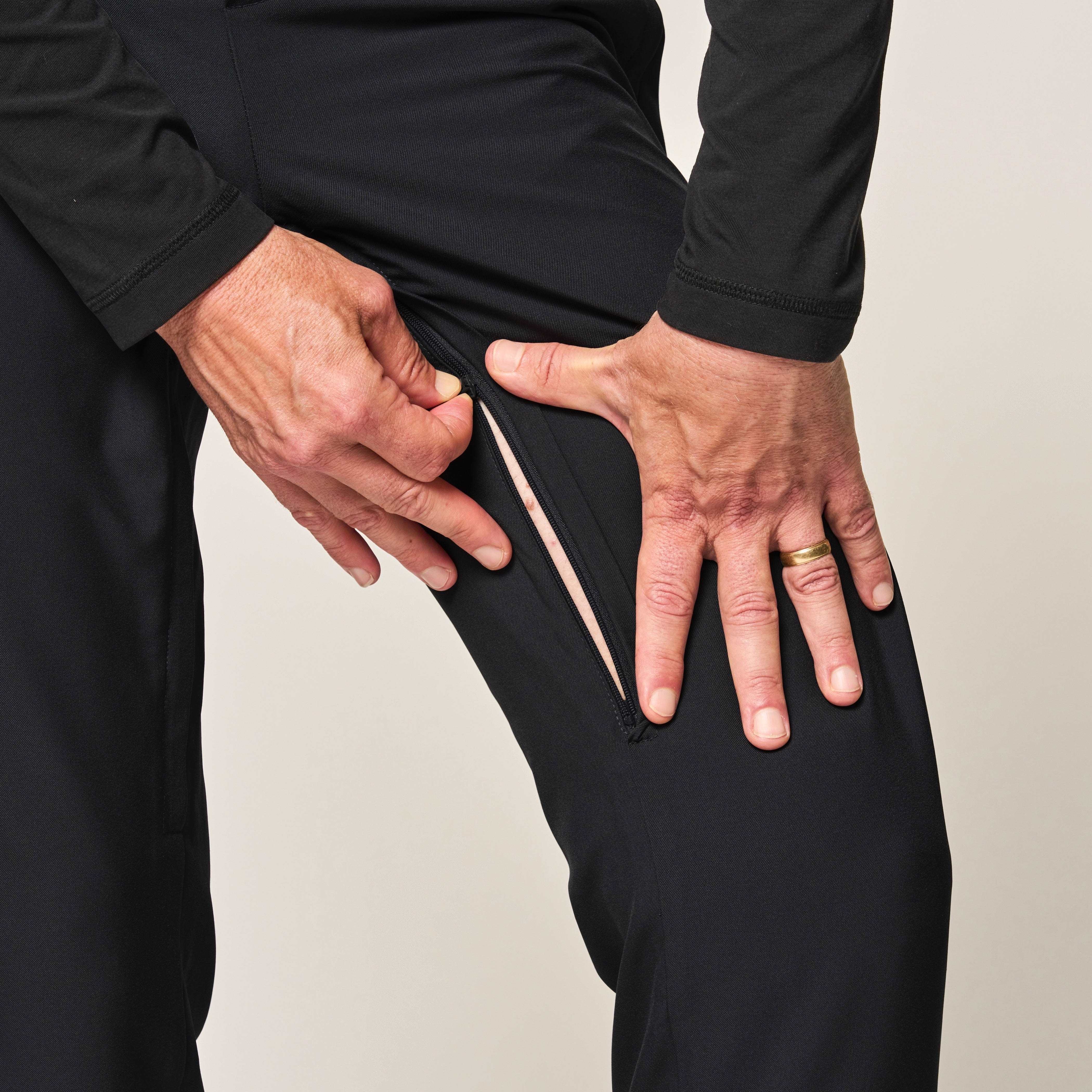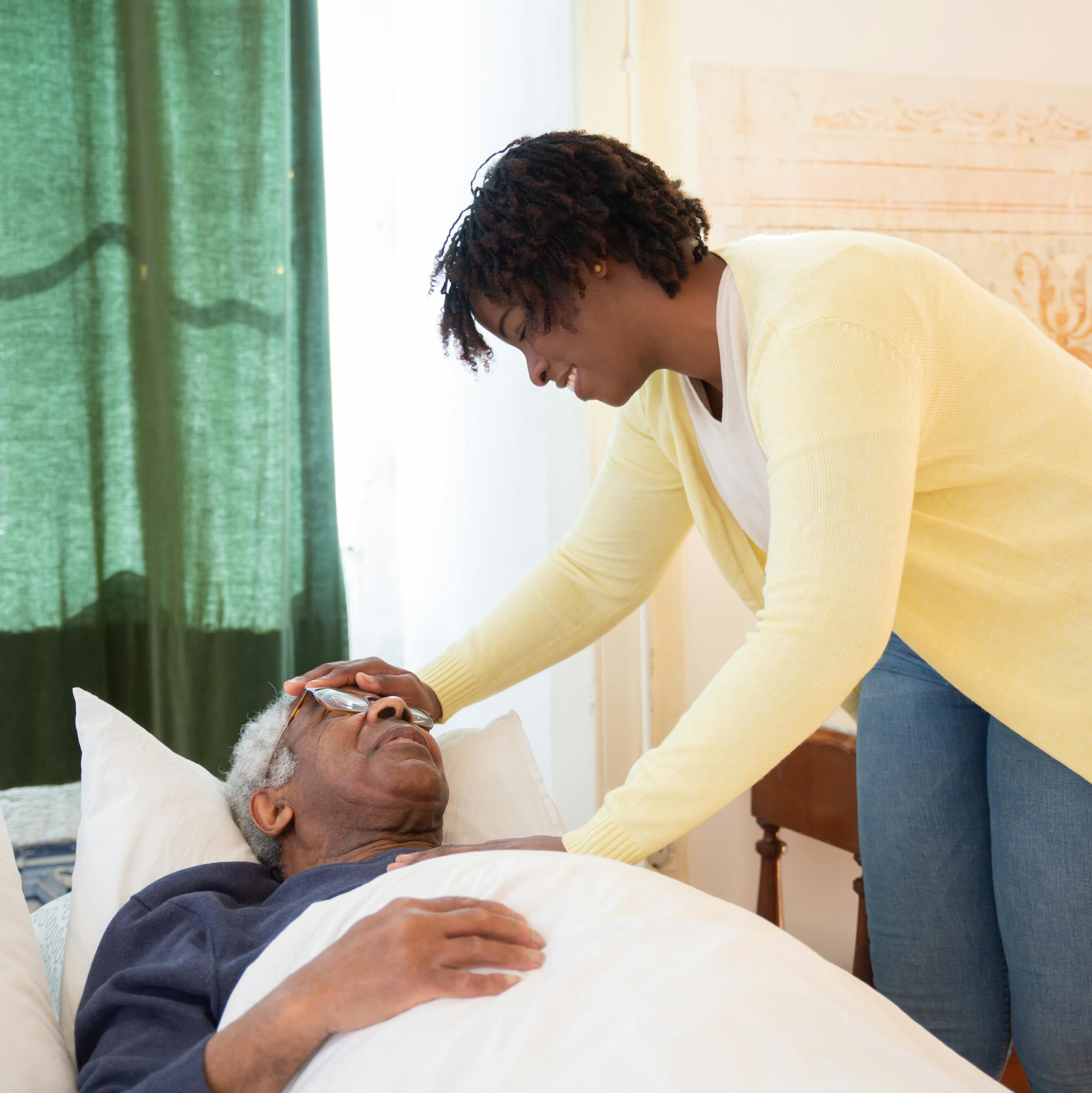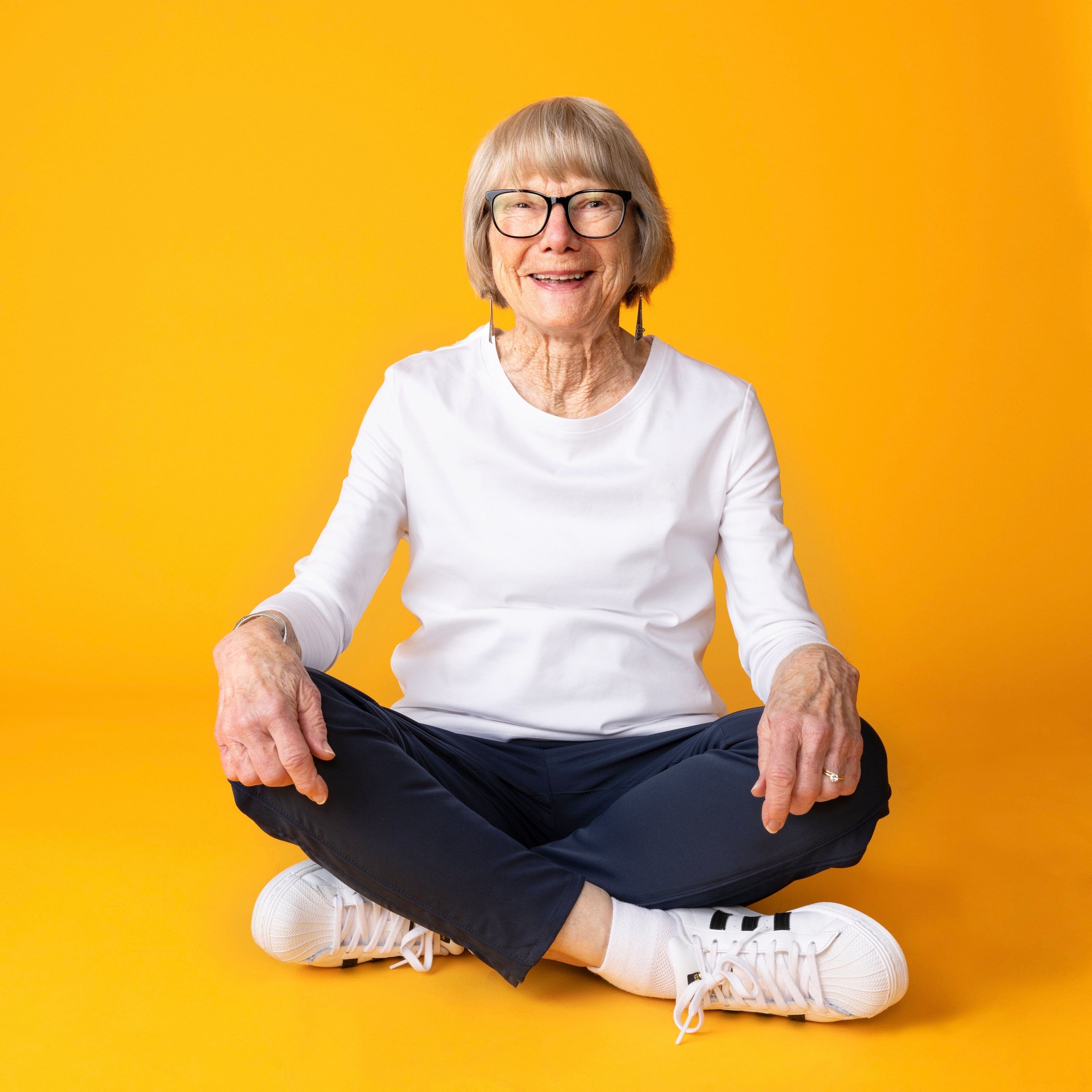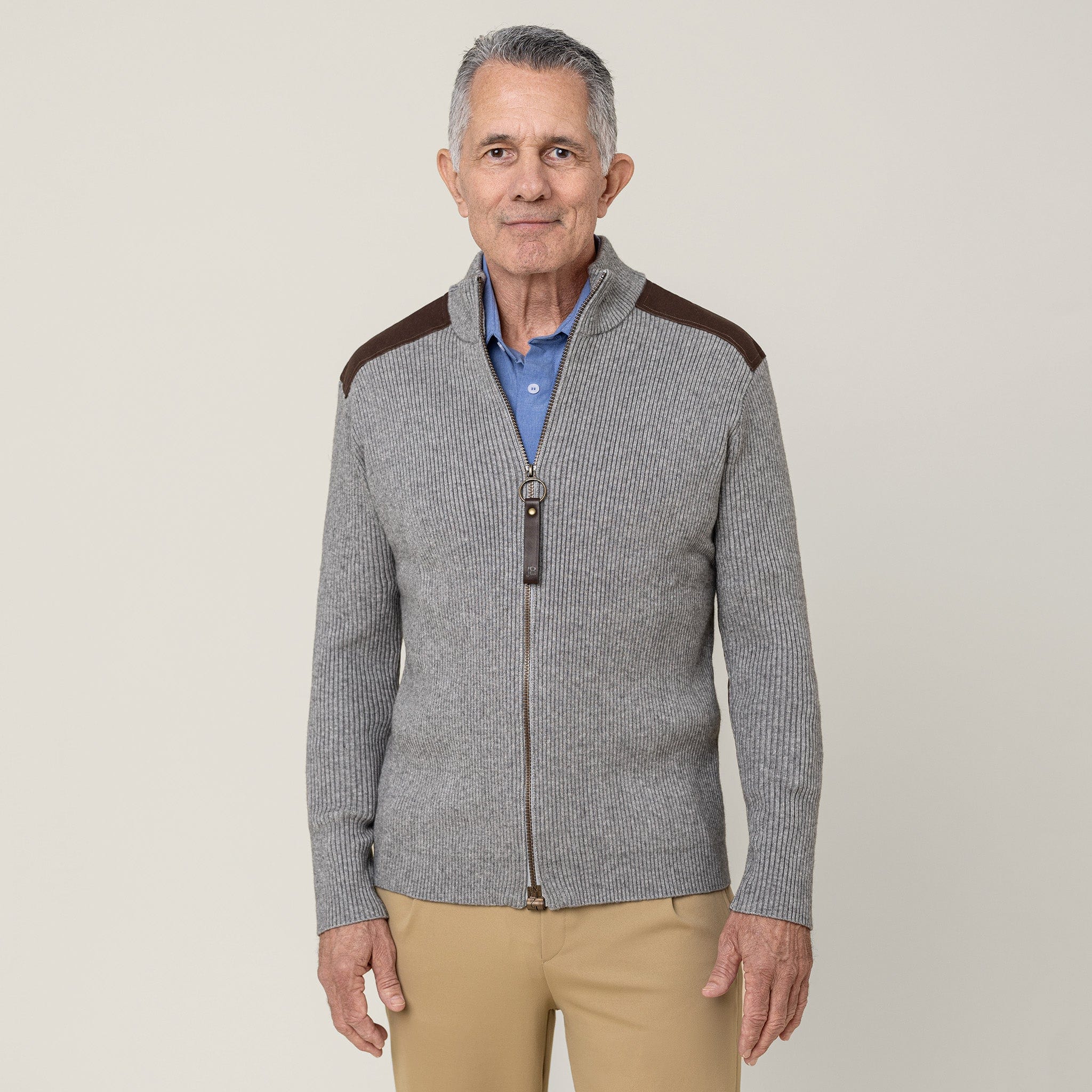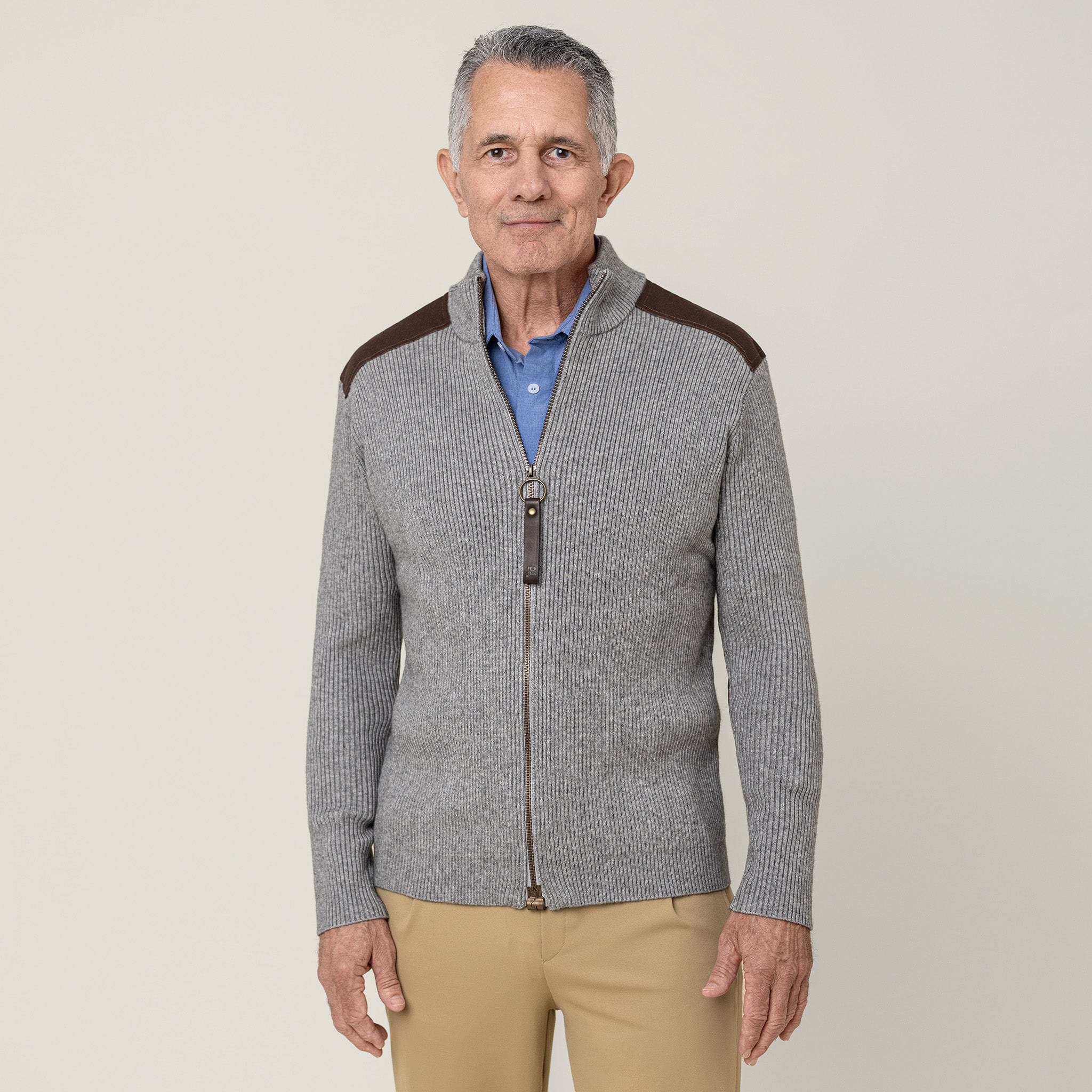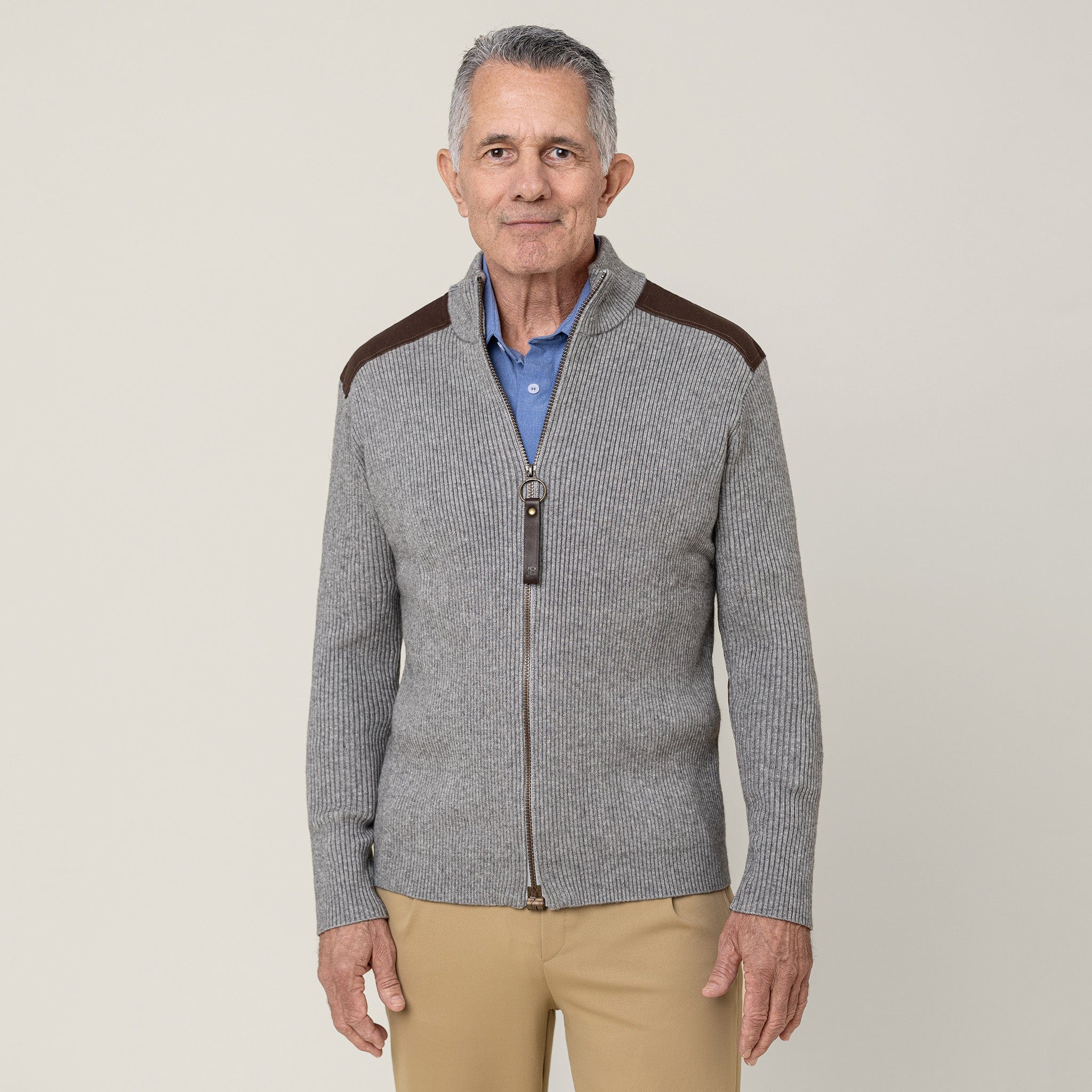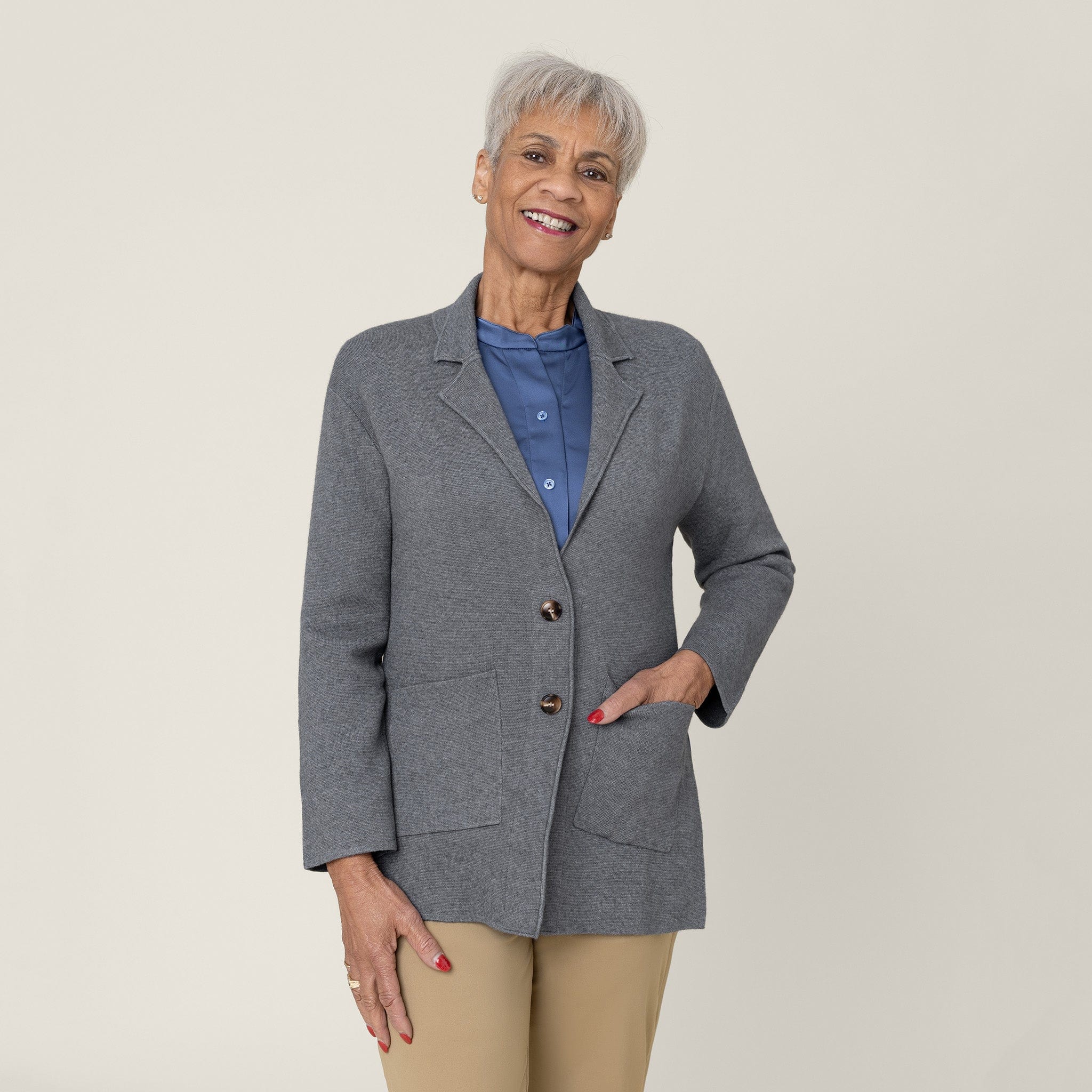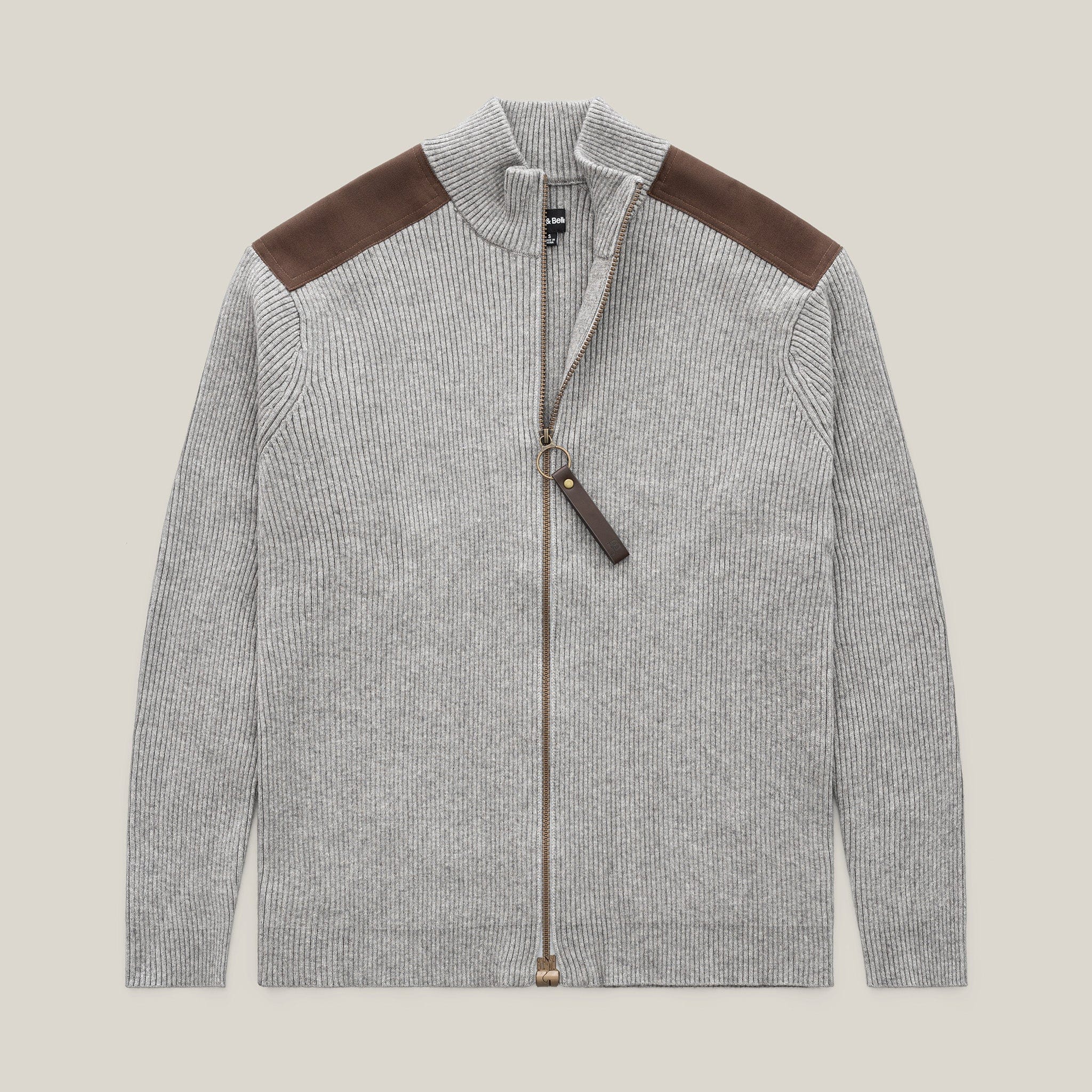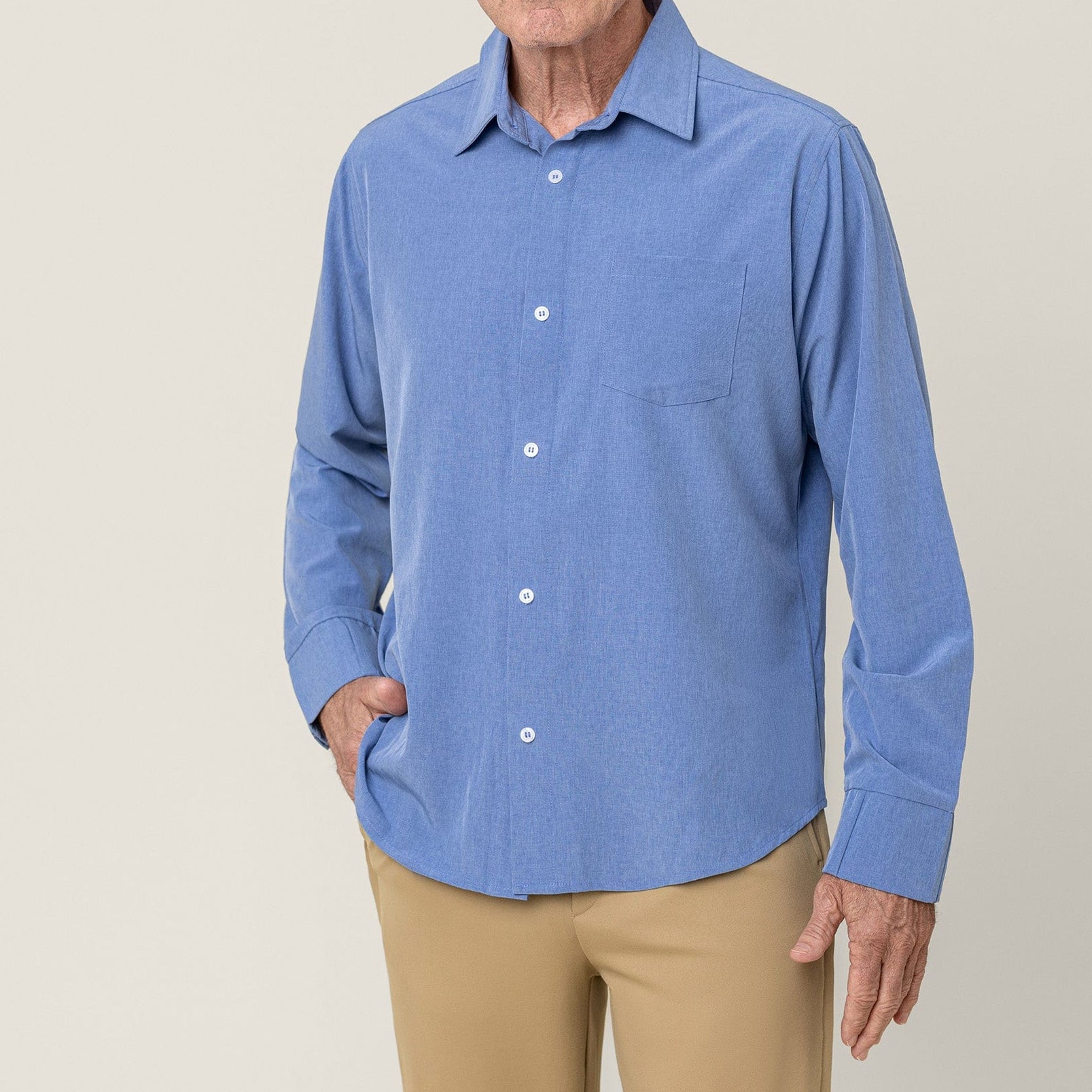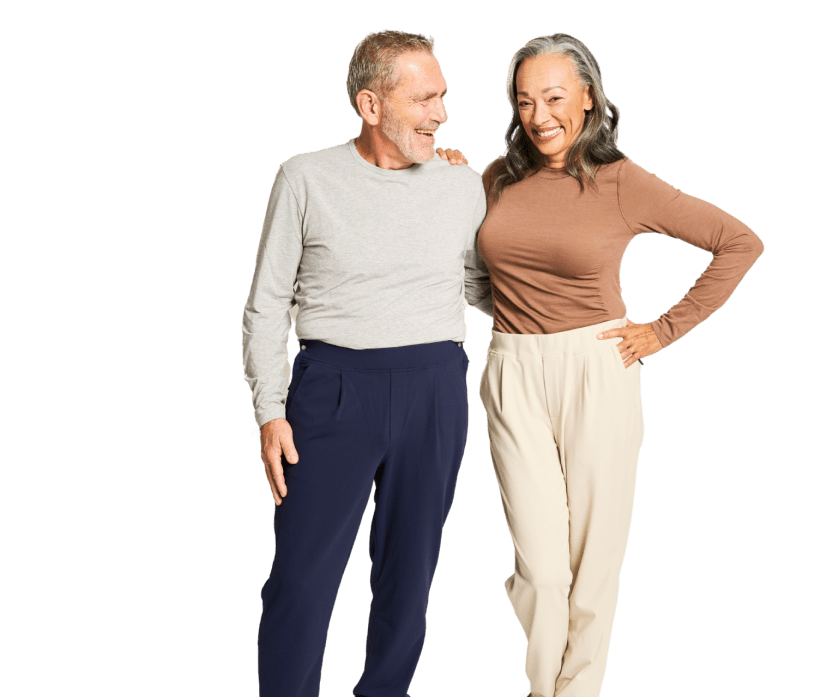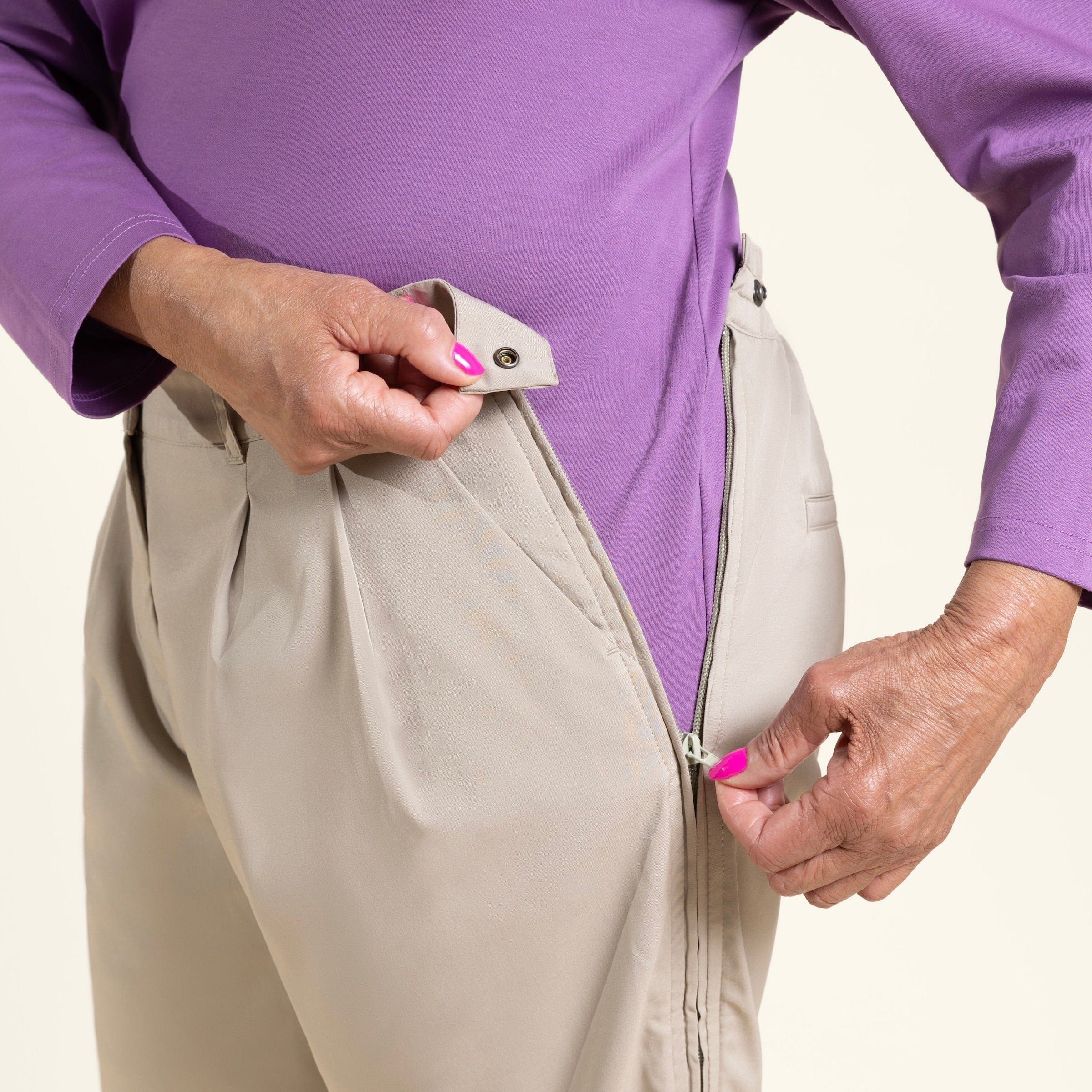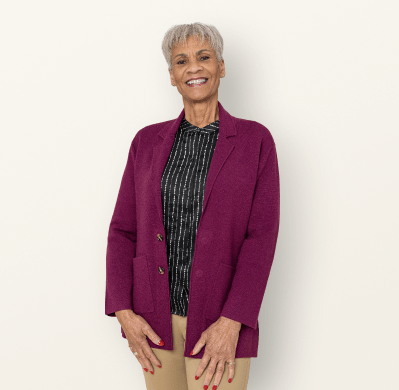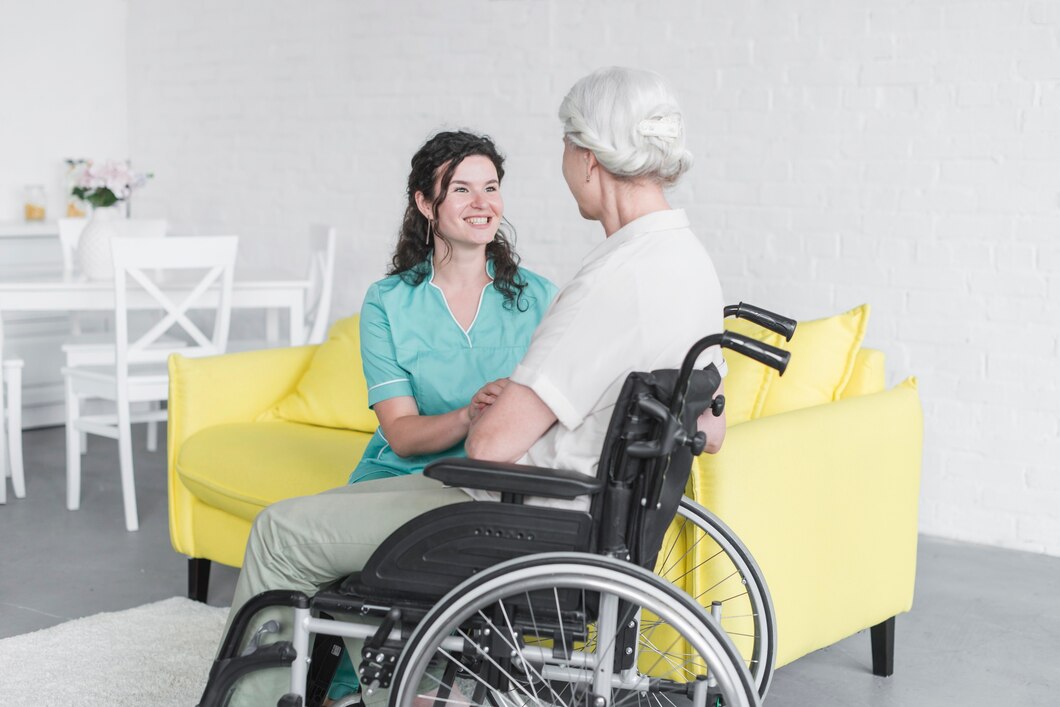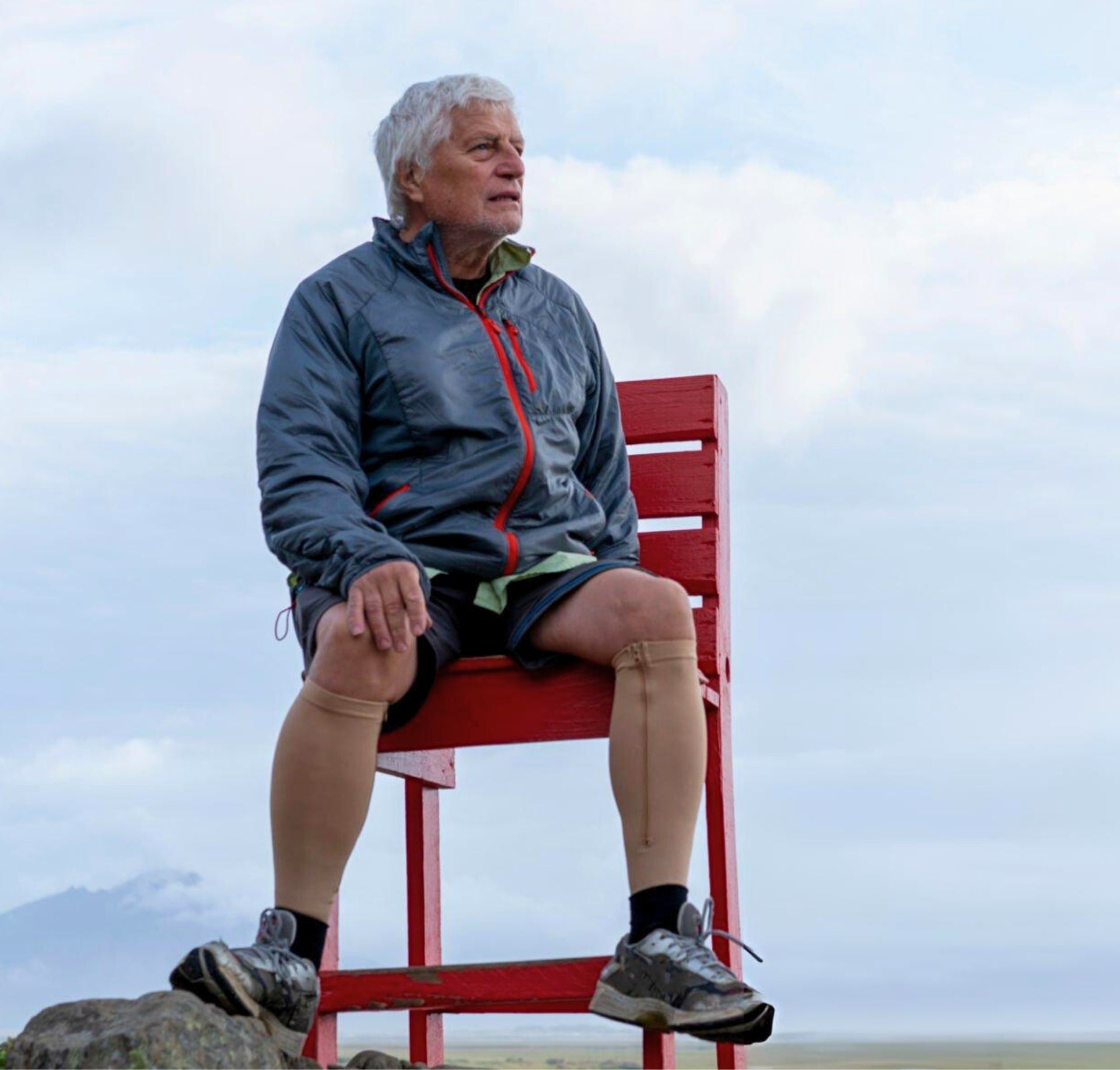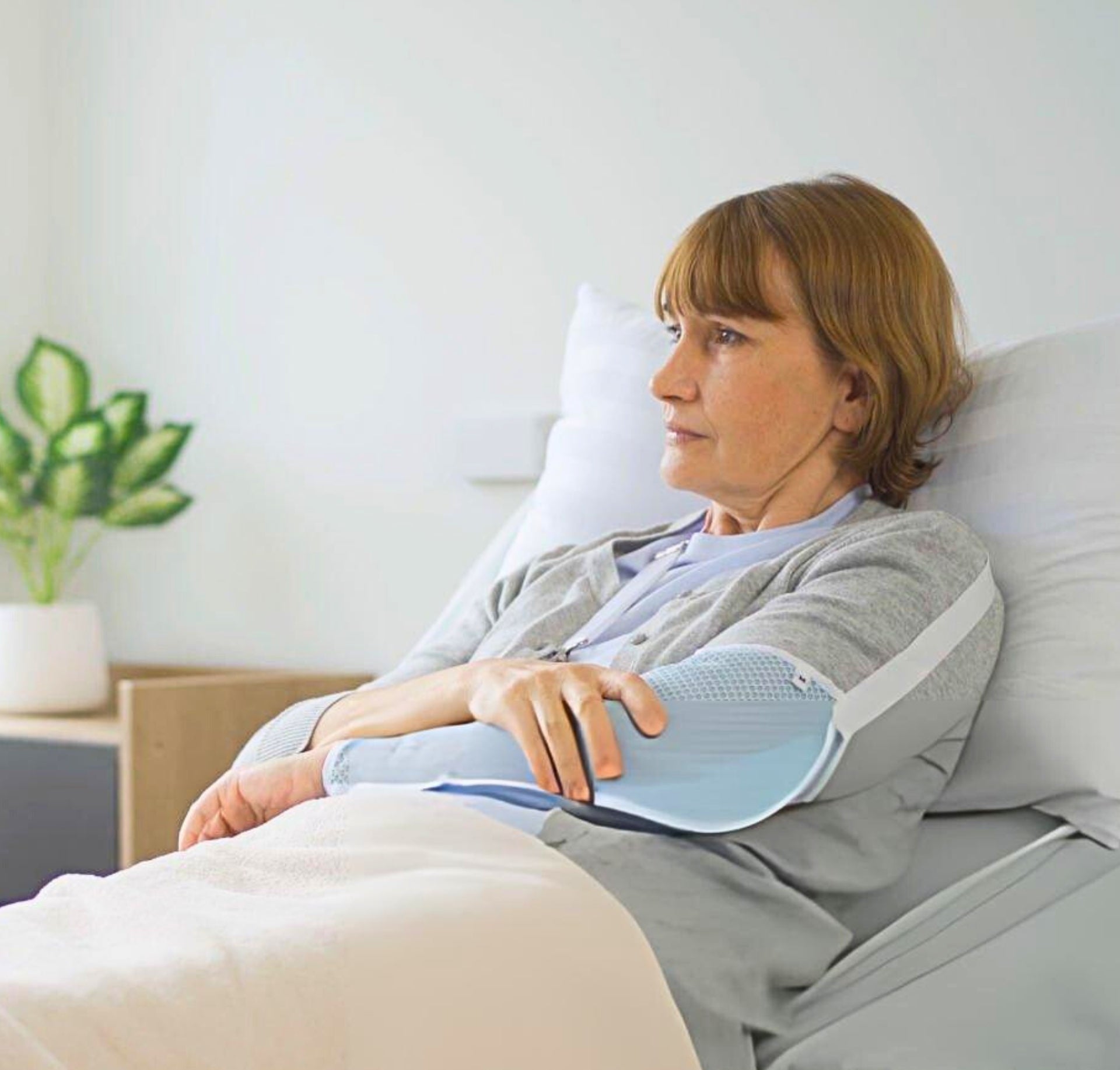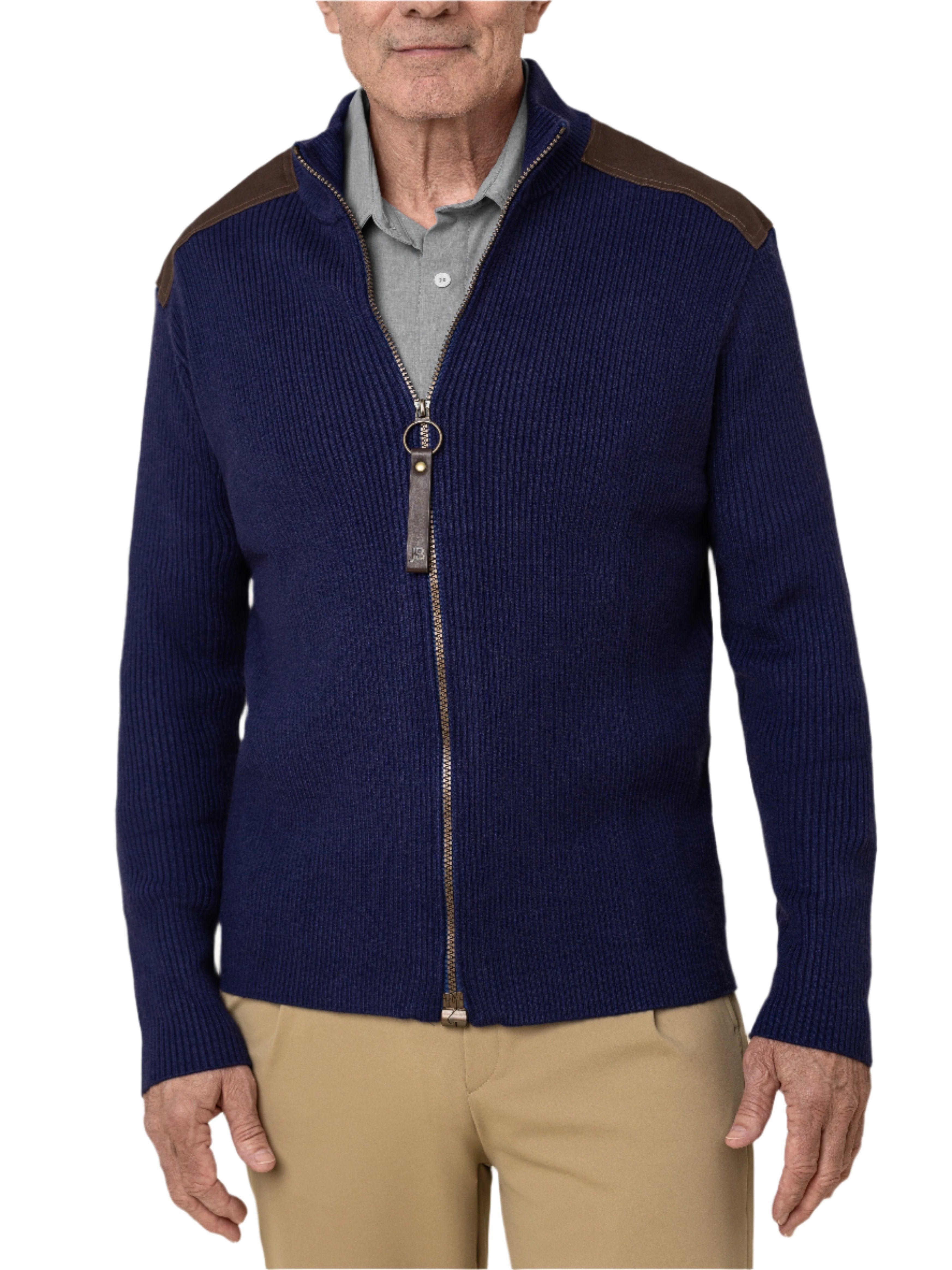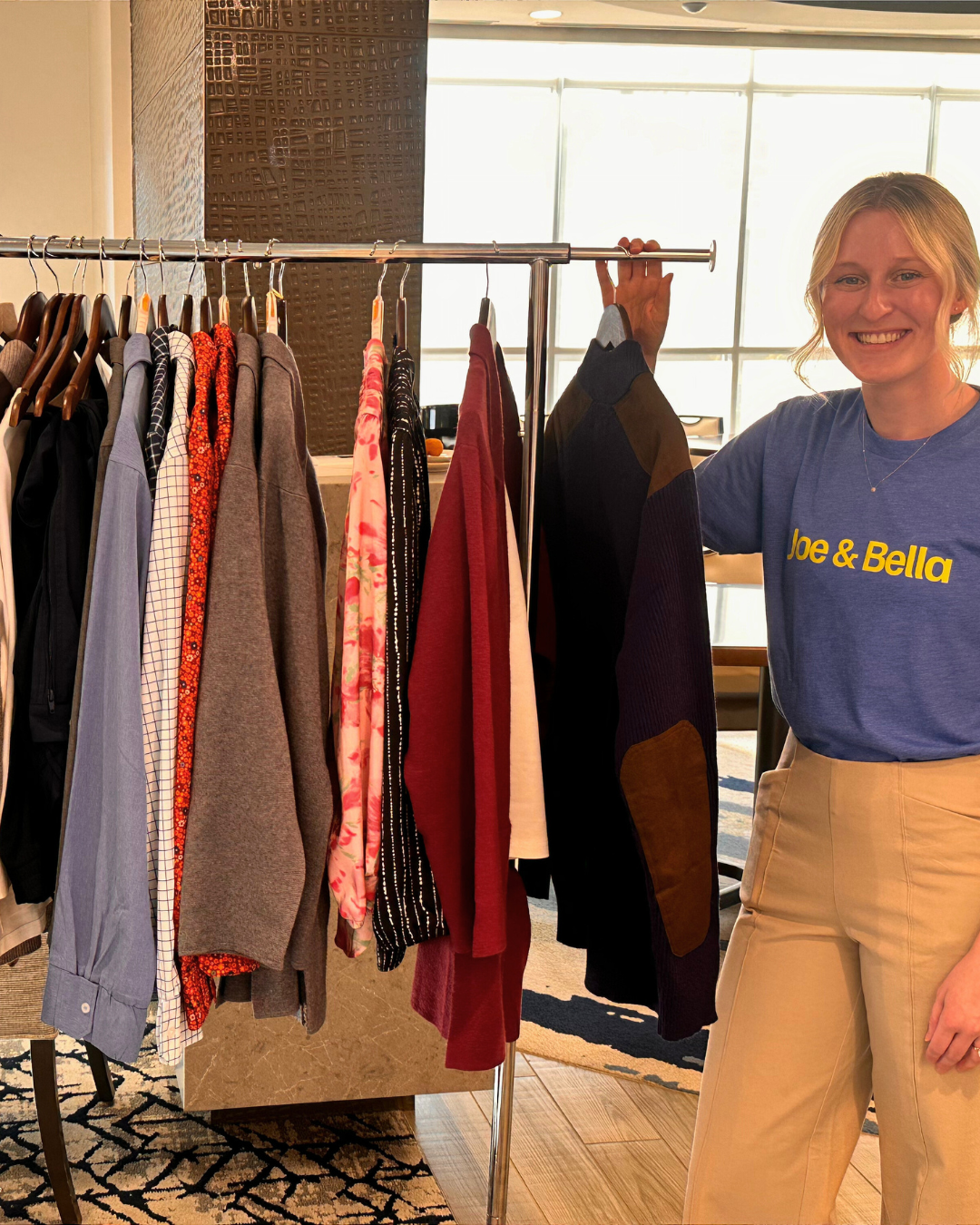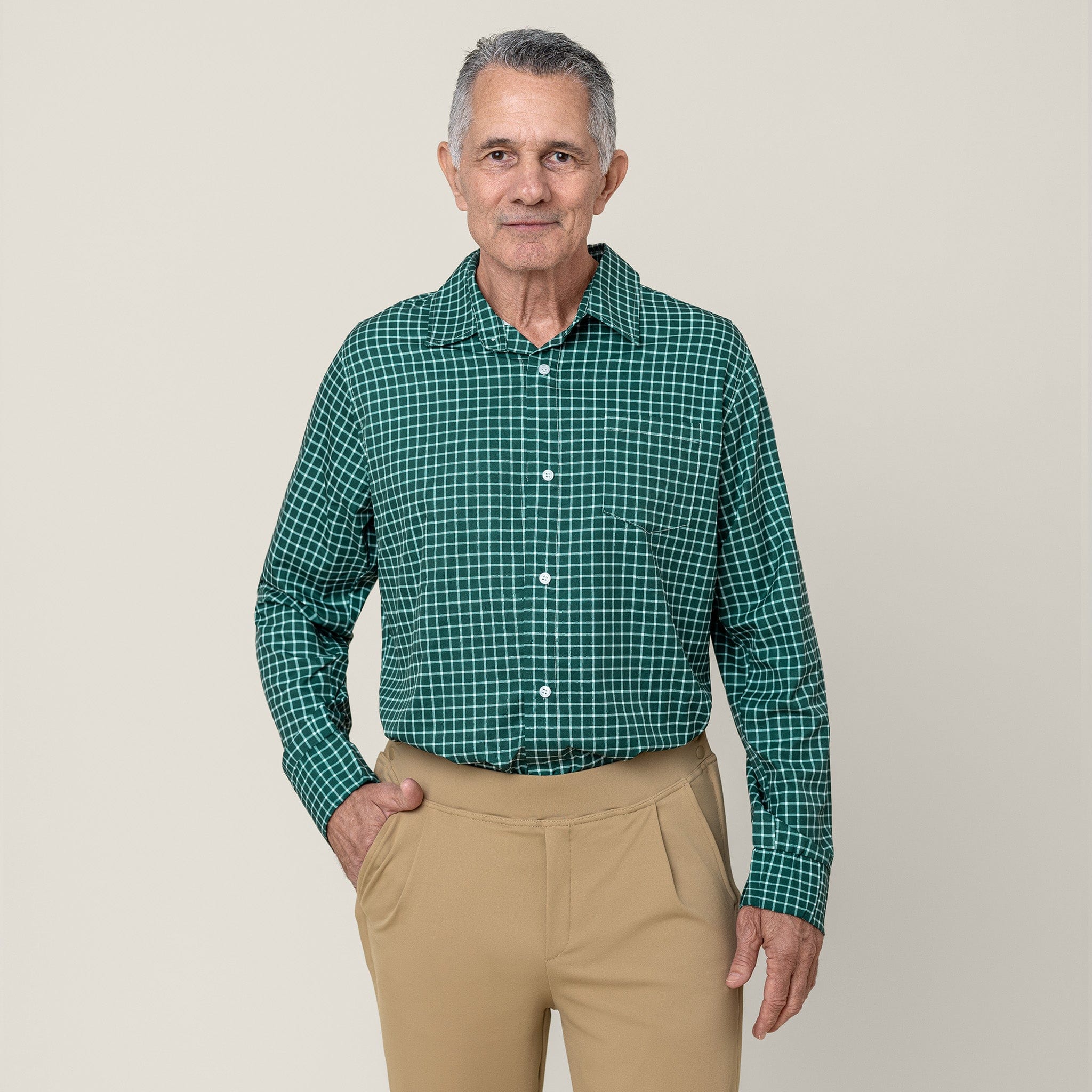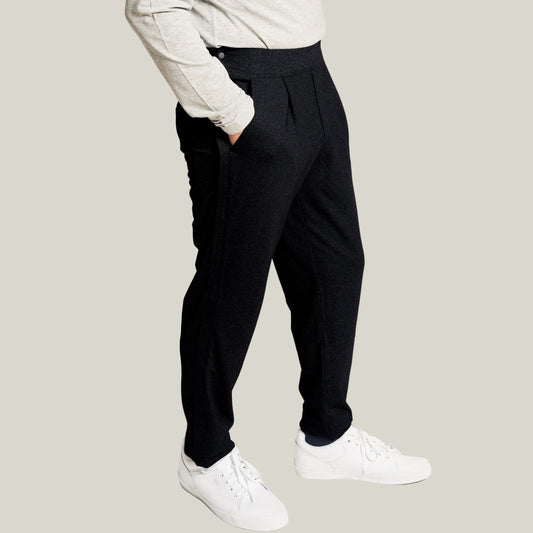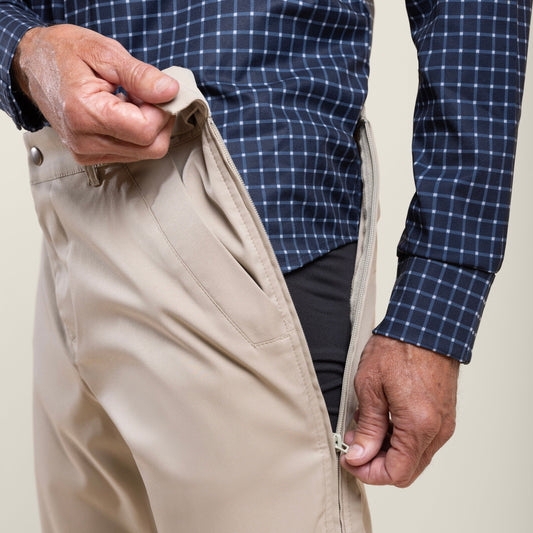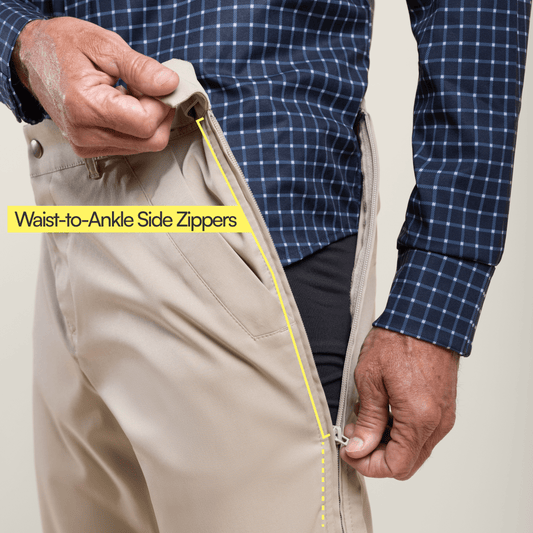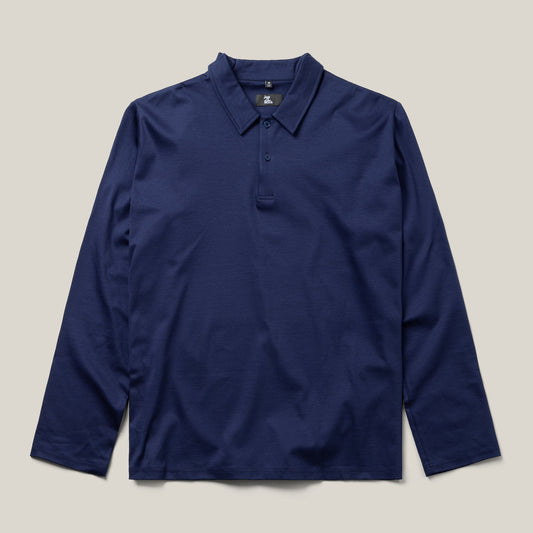For many, choosing the right clothing is a daily ritual that is so automatic, we tend not to think about it. But for those who live with a physical disability, special needs, or are experiencing new changes due to normal aging, this seemingly mundane task can be quite challenging. That's where adaptive clothing comes to the rescue, offering a practical solution to make dressing easier, more comfortable, and more stylish for people of all ages. Over the last few years, several new brands have emerged in this space (along with many well-known brands that have jumped on the adaptive-clothing bandwagon), offering dressing solutions that can significantly improve daily lives. In this comprehensive adaptive clothing guide, we'll delve into the world of adaptive clothing, exploring what it is, its importance, and how to choose the right adaptive garments for your specific needs.
What Are Adaptive Clothes?

Adaptive clothing is specially designed for individuals with physical or cognitive changes that may hinder their ability to dress independently or without discomfort. These changes can result from aging, medical conditions, disabilities, or injuries. The primary goal of adaptive clothing is to simplify the dressing process and enhance the wearer's overall comfort and style.
Conditions Helped by Adaptive Clothes

Adaptive clothing is designed to cater to the diverse needs of individuals with various physical conditions. Here are some common physical conditions and situations in which adaptive clothing can make a significant difference:
Limited Mobility: Many older adults and others living with physical disabilities experience reduced mobility, making it challenging to put on or take off traditional clothing. Adaptive clothing can include innovative openings and closures that accommodate different and easier ways to put on and off clothes.
Arthritis: Arthritis can cause joint pain and stiffness, making the fine motor skills required for buttoning and fastening non-adaptive clothes a challenge. Adaptive clothing with large, easy-to-use closures (or even magnets) can alleviate this issue.
Incontinence: For those dealing with incontinence issues, adaptive clothing for incontinence that allows for quick and discreet access to incontinence products or catheters can significantly enhance comfort and convenience.
Dementia: Individuals with dementia may become agitated or anxious during dressing, making the process stressful for both they and their caregivers. Adaptive clothing that opens along the back or features simplified closures can make dressing a more calming, easier experience.
Diabetes: Diabetic individuals who require regular monitoring or insulin injections can benefit from adaptive clothing with discreet openings, providing easy access to their devices. Additionally, some diabetics may experience occasional swelling in their legs and ankles; adaptive clothing often comes in extra-wide sizes and features extra-stretch fabric to accommodate swelling.
Post-Surgery Recovery: After surgery, individuals often face limitations in mobility and dressing. Adaptive clothing with features like side zippers and comfortable fabric can aid in the recovery process. Even if you're recovering from a broken arm, there's adaptive clothing options available.
Wheelchair Users: Adaptive clothing designed for individuals who use wheelchairs ensures comfort and ease when sitting for extended periods. Clothing that’s specifically designed for those who are in a seated position provides comfort and ease. For example, pants with an ergonomic fit or strategically placed pockets and seams are particularly suited for long periods of sitting.

Types and Examples of Adaptive Clothing
Adaptive clothing encompasses a wide range of garments and accessories. These include:
Adaptive Shirts: Adaptive shirts are available in various popular styles, including button-down shirts and polos. They often feature innovative closures such as magnetic buttons, side zippers, or open-back designs, making them easy to put on and take off. An excellent example of adaptive shirts is Joe & Bella's Men's Everyday Magnetic Button Down. This shirt looks like a typical button-down but behind the decorative buttons are hidden magnets that make dressing so much easier (even with one hand!).

Adaptive Pants: Adaptive pants come in different styles to suit various needs while reducing a person's difficulty in pulling up pants. Some feature side zippers that extend from the waist to the ankle, while others have inseam zippers for quick access. Joe & Bella offers several adaptive pants, including CareZips®, Everyday Side-Zip Pants, and Freedom Chinos. Each of these special products offers different adaptive features, fits, and styles, depending on your needs and preferences.

Shoes: Adaptive footwear typically includes shoes with adaptive features like adjustable closures, stretchable fabrics, or anti-slip soles.
Accessories: Adaptive accessories, such as anti-slip socks, often feature non-skid soles to reduce the risk of falls and provide additional safety and stability. Joe & Bella’s Everyday Gripper Socks are wider than normal socks to accommodate swelling and feature minimal seam construction, premium fabric, and strategically placed silicon grippers on the bottom of the sock to provide traction.

Joe & Bella offers an array of adaptive clothing that serves as excellent examples of what adaptive fashion can achieve. Their products are designed to promote independent dressing and ease assisted dressing, while enhancing style and comfort.
Benefits and Features of Adaptive Clothing
The special features and benefits of adaptive clothes play a vital role in improving the lives of those who wear them. Some key benefits and features include:
Easy Dressing: Adaptive clothing is engineered to simplify the dressing process, whether you're dressing independently or with assistance. Garments with magnetic closures or side zippers are excellent examples of how adaptive clothing eases the process of putting on and taking off clothes.

Durable and Breathable Fabric: Most adaptive clothing is crafted from durable, breathable fabric that keeps you comfortable throughout the day. This benefit is particularly important for those who have limited mobility, as it prevents moisture from sticking to the skin.

Access to Medical Devices: Adaptive pants, like Joe & Bella's CareZips®, feature a third inseam zipper, allowing quick and easy access to incontinence products or medical devices. This feature is particularly beneficial for older adults and those with specific medical needs.

Innovative Closures: Adaptive pants like Joe & Bella's Freedom Chinos feature waist-to-ankle side zippers that open from the top and bottom, making them effortless to put on and take off, even while wearing shoes. Joe & Bella’s tops for assisted dressing, including the Men’s Everyday Polo and the Women’s Everyday Long-Sleeve Top open along one of the side seams so the wearer can dress easily and comfortably, very much like a hospital gown. The opening is secured with discrete snaps that make assisted dressing significantly easier.

Tips on How to Choose the Right Adaptive Clothing

Choosing the right adaptive clothing involves considering individual needs, size, and materials. Here are some tips to help you make the best selection:
Assess Your Needs: Determine the specific challenges you face when dressing and identify the features that would be most helpful. For example, consider whether you need adaptive clothing to extend your dressing independence or to ease assisted dressing. Then think through how the adaptation will ease dressing for you and whether you prefer magnetic closures, zippers, snaps, or Velcro.
Correct Sizing: It's essential to select adaptive clothing that fits well and doesn't constrict your movements. Be sure to check the sizing chart provided by the manufacturer and measure yourself accurately.
Fabric Matters: Look for adaptive clothing made from breathable, stretchy, and comfortable materials to assure that you’ll stay comfortable and relaxed throughout the day.
Get to know more adaptive clothing for seniors with disabilities with this comprehensive guide.




